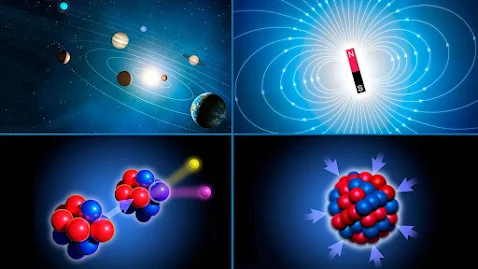The Sun:
The Sun is the star at the centre of our solar system. Its gravity holds the solar system together, keeping everything from the - biggest planets to the smallest bits of debris - in its orbit.
Heat and light are produced by nuclear events that occur deep beneath. In order to produce this energy, The Sun has been using four million tonnes of hydrogen fuel each second since its formation, or around 4.6 billion years ago.
Solar Flares:
A solar flare is a massive eruption that occurs on the Sun when energy that has been trapped in "twisted" magnetic fields- which are typically found above sunspots, Chromosphere -is suddenly released.
They may heat materials to millions of degrees in a matter of minutes, resulting in a burst of radiation that includes: radio waves, X-rays, and gamma rays.
Sun Spots:
Sunspots are areas where the magnetic field is about 2,500 times stronger than Earth's, much higher than anywhere else on the Sun. Because of the strong magnetic field, the magnetic pressure increases while the surrounding atmospheric pressure decreases.
This in turn lowers the temperature relative to its surroundings because the concentrated magnetic field inhibits the flow of hot, new gas from the Sun's interior to the surface.
Sunspots tends to occur in pairs that have magnetic fields pointing in opposite directions.
Why Sun Spots are Dark?
The sunspots are large concentrations of strong magnetic field. Some energy is partially prevented from passing through the surface by this magnetic field.
As a result, sunspots experience a lower surface temperature than other areas of the surface. It appears darker when the temperature is lower.
Coronal Mass Ejections (CMEs):
Coronal mass ejections (CMEs) are large expulsions of plasma and magnetic field from the sun's atmosphere the corona.
Compared to solar flares bursts of electromagnetic radiation that travel at the speed of light, reaching Earth in just over 8 minutes.
Formation of CMEs:
The more explosive CMES generally begin when highly twisted magnetic field structures (flux ropes) contained in the Sun's lower corona become too stressed and realign into a less tense configuration - a process called magnetic reconnection.
Near Earth CMEs Effects:
Auroras:
The CMEs causes stunning light displays known as auroras, visible in the polar regions of the earth.
Geomagnetic Storms:
CMEs can cause significant disturbances in Earth's magnetosphere, leading to geomagnetic storms which are; Satellite Operations, Power Grids, Communication Systems.
Radiation Hazards:
It Increases radiation levels at high altitudes, especially near the poles.
Preventing & Monitoring:
SPACE WEATHER FORECASTING:
To provide early alerts of possible CMEs, organisations such as NASA and NOAA's Space Weather Prediction Centre (SWPC) track solar activity.
AID:
Continuous monitoring and improved prediction models are essential to prevent the bad impacts of CMEs.
How to Find the Sun Spots Area:
To find the area of sunspots, I use the manual formula to calculate the area of the sunspots.
As = ((Af x n) / cos (B) x cos (L))
Where,
As - Area of the sunspot,
Af - Area factor constant for the solar chart image (i.e., 63.66),
n - Number of grid sares occupying the sunspot,
B- Heliographic latitude,
L - Angular distance of the sunspot from the solar disk centre.
The physical unit for the calculated area is a millionth of a hemisphere (MHS).
Solar Cycle:
About every 11 years, the Sun's magnetic field gradually changes polarity, a process known as the solar cycle. This reversal causes changes in solar activity.
The solar cycle has been observed and recorded since the mid-18th century, with the current cycle being Solar Cycle 25.
"Sun, in fact, is the center of the universe" -Nicolaus Copernicus.







































